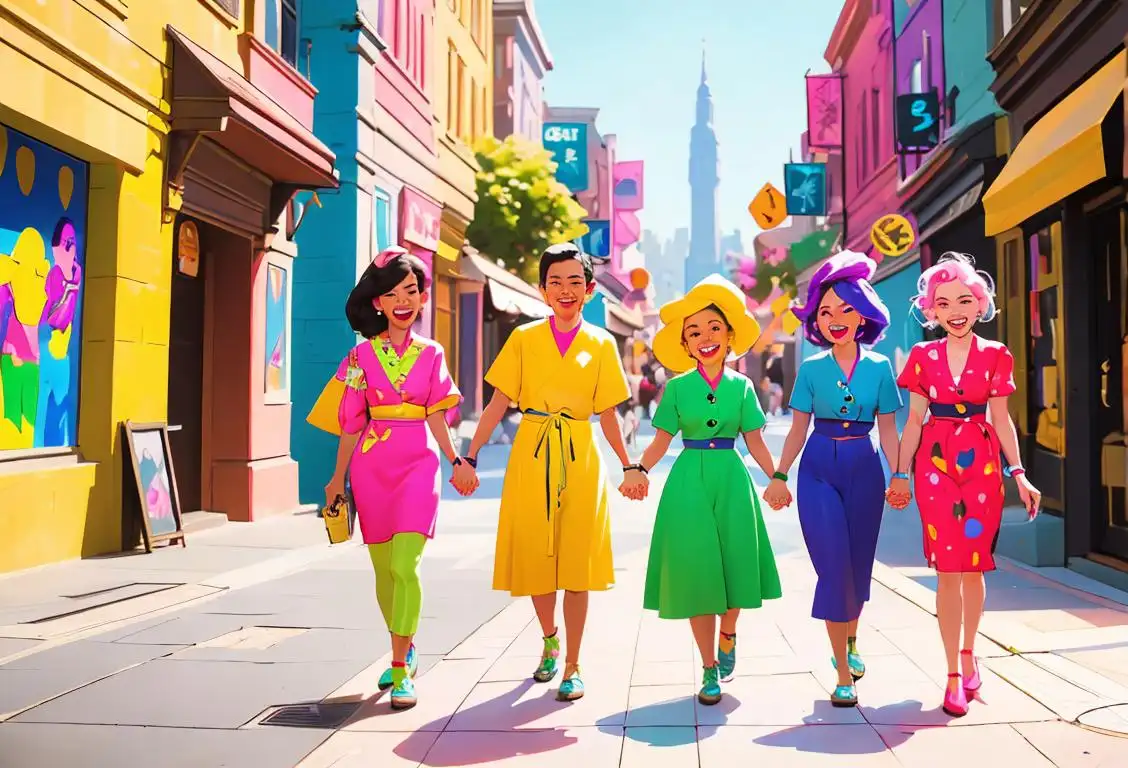National Disabled Access Day

Hey there! Are you ready to dive into the wonderful world of National Disabled Access Day? Well, buckle up! It's time to learn, laugh, and celebrate inclusivity!
When is Disabled Access Day?
It's national disabled access day on the 12th March.
The Origin Story of National Disabled Access Day
If you were wondering where this marvelous day came from, wonder no more! National Disabled Access Day was first celebrated on March 12, 2016. This special day aims to raise awareness about the importance of accessibility and promote equal rights for all individuals, regardless of their abilities.
It all started with a group of passionate individuals who wanted to make a difference. They realized that accessibility is not just wheelchairs and ramps, but a broader concept that encompasses every aspect of life. So, they decided to create a day that would shine a spotlight on the need for accessible environments, and thus, National Disabled Access Day was born!
Spreading Awareness and Breaking Barriers
National Disabled Access Day is not just about bringing attention to physical barriers; it's about fostering a society where everyone feels valued and included. It's a day to celebrate progress, share experiences, and inspire change.
On this day, communities, businesses, and organizations come together to showcase their commitment to accessibility. They open their doors to people of all abilities, demonstrating that everyone deserves equal opportunities and access to goods, services, and experiences. It's a true celebration of diversity and inclusivity!
The Power of Inclusion
National Disabled Access Day is a wonderful opportunity to educate ourselves and others about the challenges faced by individuals with disabilities. By understanding their unique needs, we can work towards creating a more inclusive world.
Through this annual event, people are encouraged to explore new places, try different activities, and engage in meaningful conversations. It's a chance to break down barriers, challenge stereotypes, and create lasting connections. Together, we can build a society where everyone feels empowered and appreciated!
History behind the term 'Disabled Access'
1968
The birth of disability rights movement
The disability rights movement gained momentum in the late 1960s, pushing for equal rights and opportunities for people with disabilities. As activists fought for societal change, the need for accessibility in public spaces became increasingly apparent.
1969
Birth of the Disabled Rights Movement
The term 'disabled access' has its origins in the birth of the Disabled Rights Movement in 1969. This movement aimed to challenge societal attitudes towards disabled individuals and advocate for equal rights and opportunities. As part of this movement, activists began to address the need for better accessibility to public spaces and facilities for people with disabilities.
1973
Section 504 of the Rehabilitation Act
In 1973, a significant milestone occurred with the passage of Section 504 of the Rehabilitation Act in the United States. This section prohibited discrimination based on disability in programs and activities receiving federal financial assistance. It was one of the first federal laws to explicitly address the issue of accessibility. The enactment of Section 504 pushed the concept of 'disabled access' further into the public consciousness.
1973
Section 504 and early focus on access
In 1973, Section 504 of the Rehabilitation Act was passed in the United States, prohibiting discrimination against individuals with disabilities in federally funded programs. This landmark legislation laid the foundation for accessibility rights and initiated a shift towards considering disabled access as an essential aspect of equality.
1990
Americans with Disabilities Act (ADA)
The landmark Americans with Disabilities Act (ADA) was signed into law in 1990. This comprehensive legislation aimed to eliminate discrimination against individuals with disabilities. Under the ADA, 'disabled access' became a central concept, requiring public and private entities to make reasonable accommodations to ensure equal access for people with disabilities. The ADA contributed significantly to raising awareness about the importance of accessibility in various aspects of society.
1981
The push for accessible infrastructure
Throughout the 1980s, there was an increasing emphasis on creating accessible infrastructure to accommodate individuals with disabilities. This encompassed the design and implementation of ramps, elevators, widened doorways, and other architectural modifications to enable wheelchair accessibility.
1992
Introduction of Accessibility Guidelines
In 1992, the United States Access Board published the first edition of the ADA Accessibility Guidelines (ADAAG). These guidelines provided detailed specifications and standards for accessible design in various areas, including buildings, transportation, and telecommunications. The introduction of these guidelines marked a significant step towards establishing clear expectations for 'disabled access' and promoting universal accessibility.
1990
The Americans with Disabilities Act (ADA)
The passage of the Americans with Disabilities Act (ADA) in 1990 marked a significant milestone in disability rights. The ADA mandated accessibility measures in public accommodations, employment, transportation, telecommunications, and government services. The term 'disabled access' began to gain prominence as a way to describe these accommodations.
2020
Continued Focus on Inclusive Design
In recent years, there has been a growing emphasis on inclusive design and the concept of 'access for all.' The term 'disabled access' continues to evolve, encompassing not only physical accessibility but also digital access and inclusive practices in all domains. Efforts are being made to ensure that everyone, regardless of ability, can fully participate in society without facing unnecessary barriers.
1997
International recognition and standardization
Building upon the ADA, the United Nations adopted the Convention on the Rights of Persons with Disabilities in 2006. This international treaty aimed to protect and promote the rights and dignity of individuals with disabilities worldwide. 'Disabled access' emerged as a standardized term across different cultures, emphasizing the need for inclusive design and accessibility.
Present
Continued progress and evolving terminology
In the present day, the concept of disabled access continues to evolve as societies strive for more comprehensive inclusivity. Innovations in technology and design have led to the development of assistive devices, tactile paving, and improved transportation accessibility. The terminology surrounding disabled access has expanded to include phrases like 'inclusive design,' 'universal design,' and 'accessibility' to encompass broader aspects of equal access and participation.
Did you know?
Did you know that National Disabled Access Day inspired businesses and organizations around the world to reassess their accessibility practices? Many establishments have used this day as a springboard to improve their facilities and make them more inclusive!Tagged
awareness funFirst identified
16th February 2016Most mentioned on
12th March 2016Total mentions
52Other days
Nurses Day
Former Prisoner Of War Recognition Day
Press Day
Handloom Day
Heroes Day
Memorial Day
Dance Day
Bestfriends Day
Liberation Day
Love Your Pet Day









